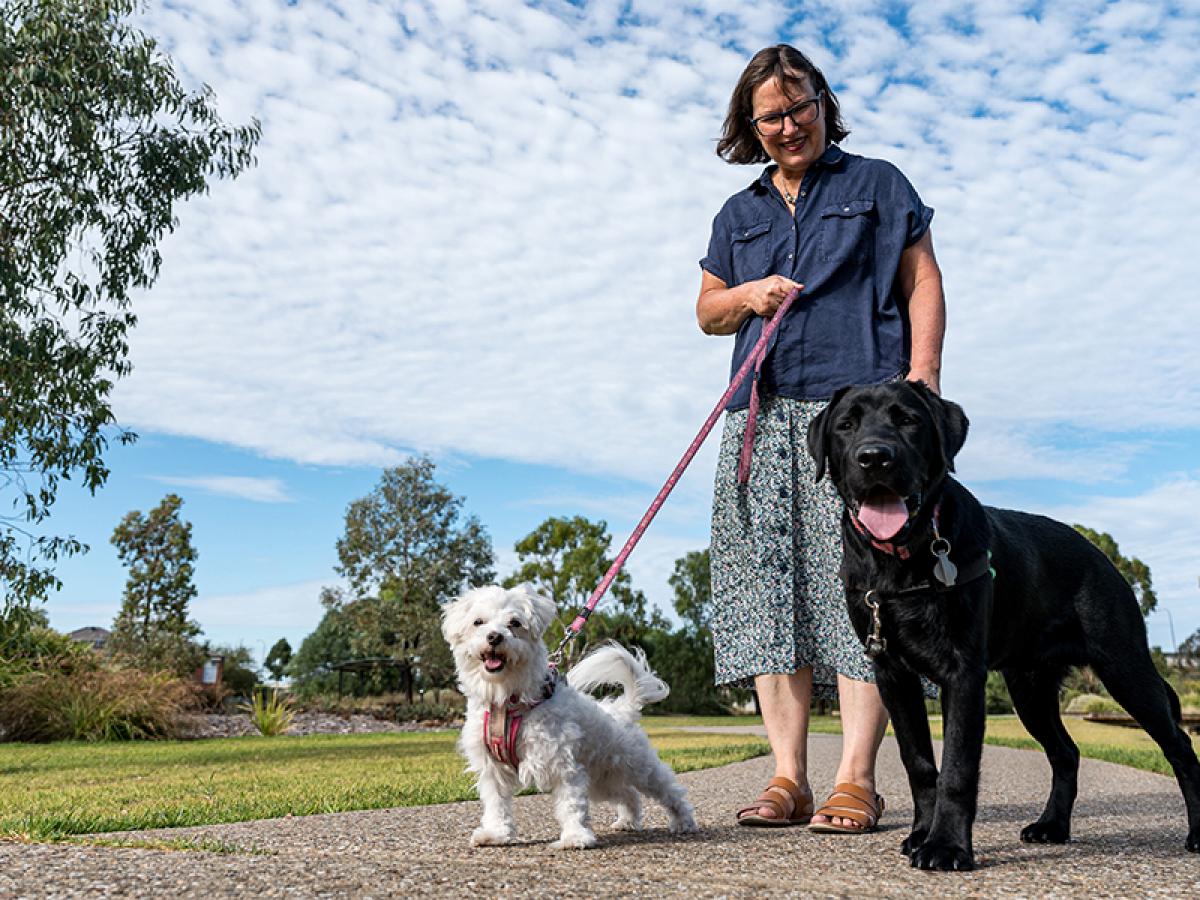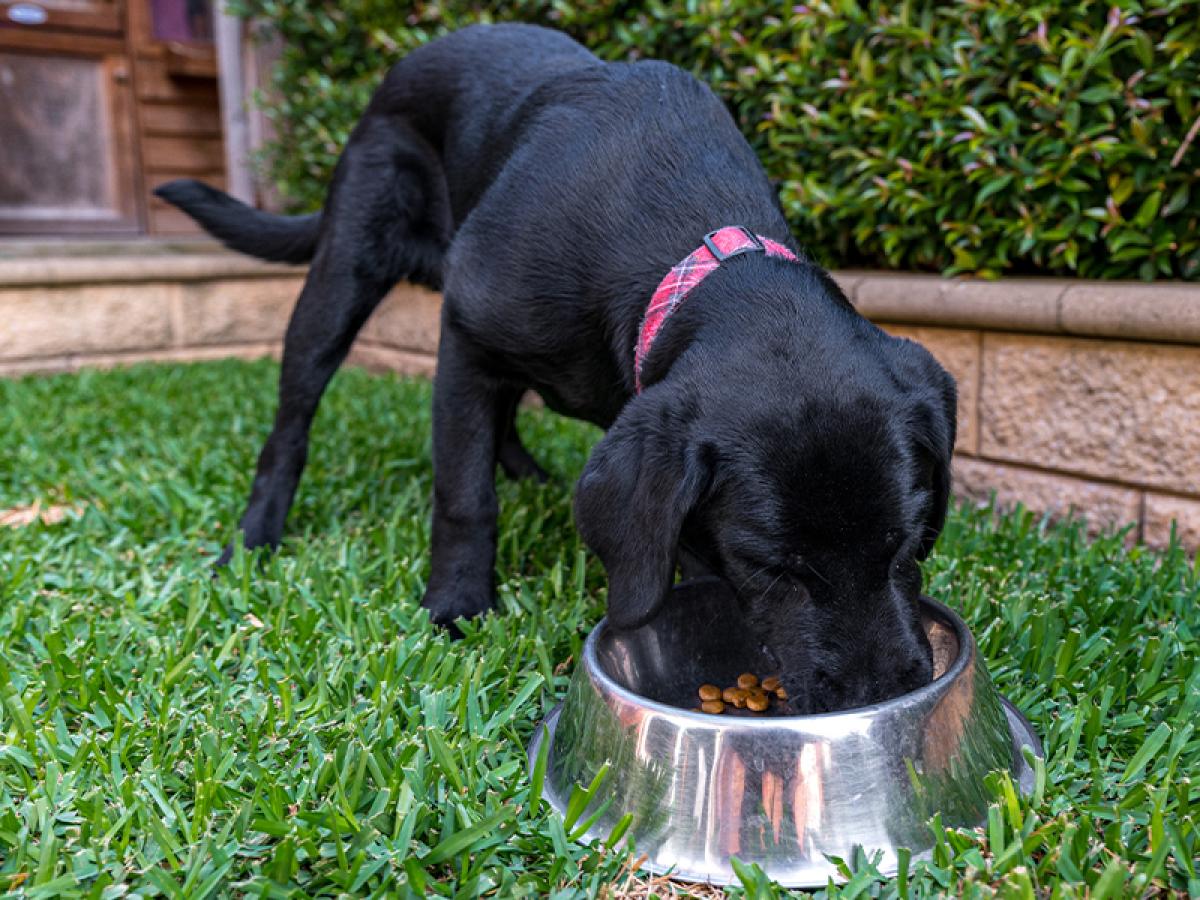Best pets for the planet

Susan, Ziggy and Rosie
You and your dog have just survived an apocalypse and there is nobody else alive. But you have radiation exposure and know you will die soon. What do you do?
This is the scenario for the robotic engineer Finch Weinberg (Tom Hanks) in the movie Finch. To look after Goodyear, his dog, Finch trains his helper-robot Jeff on how to care for dogs. In one of the last scenes Finch teaches Jeff how to play fetch with Goodyear.
I couldn’t imagine life without my dogs. For you it may be your cat, or turtle, or parrot, or snake, or rabbit. Losing a companion animal can result in profound grief, similar to losing a family member. Being left in a position where you can no longer look after your companion animal is unfortunately not uncommon: moving to a rental where you can’t keep an animal, having to move into residential care, losing your job so you can no longer afford to keep them. I doubt many people would think to add an apocalypse to this list.
But should we think about pets and an apocalypse? I don’t mean we should all plan to get helper robots. But perhaps we should start thinking more about how keeping companion animals contributes to using
up all of Earth’s resources, or nudging climate over a cliff resulting in cataclysmic climate change.
Is it sustainable to keep dogs and cats?
Keeping companion animals adds to greenhouse gas emissions, mostly through the food they eat. In the USA dogs and cats consume as much energy as nearly one-fifth of the total human population. Pet foods also contain a lot of protein, with a lot of this from other animals.We farm animals for human food, but a lot goes into food for dogs and cats. Livestock production contributes around 8% of total greenhouse gas emissions globally, with ruminants like cattle producing most of this.
It’s not only the greenhouse gas emissions from the production that are bad - land is cleared for grain and livestock production. Land clearing threatens species directly through loss of habitat, as well as resulting in carbon release.
I love my dogs, but if keeping them endangers wildlife species that doesn’t seem fair. What if the only animals we saw any more were those kept as companions or used for food? No longer hearing birds on the walk to the train in the morning, or seeing kangaroos grazing at dusk in the hills.
To make matters worse, it’s not only the issue with greenhouse gas emissions and climate change.There is an ethical problem feeding our non-human companions. Global food production needs to increase by around 50% by 2050 to be able to feed the world human population. Most of the food used in dog and cat food could be used as human food. If food supplies become short, should we be prioritising feeding humans over non- human animals?
What can we do?
Maybe in the future we’ll have a wearable device that calculates greenhouse gas emissions and total resource use from everything we buy and do. If we wanted to drive our car to Darwin or fly to the USA we would need to offset that by saving in other ways. Getting rooftop solar, running an electric car, or even not getting a car at all. There might be an absolute limit to the resources we use and greenhouse gases we produce. We would have the choice of how to use those credits, but once gone we would have to wait before consuming more. Keeping dogs would use credits, and so perhaps we would have to sell our car, or become vegetarian.
Smaller dogs might become more popular if their carbon footprint is smaller. My dogs are Rosie, a Maltese cross (rescue dog) and Ziggy, a Labrador Retriever. Ziggy is still a puppy, but as an adult will eat about a cup of dry food a day. Rosie grazes, and eats around one third of a cup a day. Cats, or even rats, would have an even smaller carbon footprint. Will the companion animals we keep change if we limit their greenhouse gas emissions? Perhaps large and giant breeds would be a thing of the past? Great Danes would go the way of the Model T Ford.

Ziggy eating
Can changing what you feed them help?
Pet food could become part of the solution rather than the problem by the ‘upcycling’ of food waste. It’s estimated around one third of food is never eaten, left to rot in the field, unsold in supermarkets, or wasted in the household. Upcycling uses food that would otherwise wind up in compost or landfill, to be diverted for other purposes.There is not a big market for upcycled pet food yet, but there could be.
Feeding of dogs and cats can be a controversial issue. There are proponents of raw food diets, but these are more likely to use edible food that could go into human food supply. Dry food has a lower carbon footprint than wet food, and may be the most sustainable type of food for the future.
It’s not just the input of what you feed your dog or cat that is important; their waste is also a problem.With over five million dogs in Australia, each month they produce as much dog poo as the weight of the Sydney Harbour Bridge. Pet faeces can by disposed of in the toilet where it will be processed as for human waste, or in composting or landfill. Many local councils provide compostable dog poo bags now, but whether or not this should be put into your green bin to be collected by the council varies. Composting it yourself may be problematic unless you manage your compost to kill any organisms. I’d love to see more local data
on what the best method of disposing of dog faeces is so that I could base our own disposal method on environmental impact and greenhouse gas emissions.
“Keeping companion animals is one of the greatest privileges we have. But it’s not one we should ever take for granted.” Susan Hazel, Associate Professor at the School of Animal and Veterinary Science
Climate change is already affecting our companion animals
Our changing climate is already negatively affecting our dogs and cats.With the recent spate of warmer and wetter weather, especially on the east coast, the areas your dog or cat can pick up tick-borne diseases greatly expanded. A dramatic increase in cases of tick paralysis this summer has led to a critical shortage of anti-tick venom for dogs and cats. South Australia is not currently home to the ticks that cause tick paralysis, but with continued climate change we might be in the future.
Lastly, please don’t contribute to loss of biodiversity by keeping wildlife as pets. Loss of habitat through land clearing and feral pests is already having dire impacts on endangered species. Humans don’t need to compound this by taking wildlife from the wild for their own pleasure. Most of these species don’t survive well in human care anyway.
Keeping companion animals is one of the greatest privileges we have. But it’s not one we should ever take for granted.
To protect this privilege in the future we must be mindful of the impact of our companion animals on resource use and a sustainable natural environment.
I would love my grandchildren to know the deep pleasure of living with a much-loved dog.You might be able to tell your secrets to a robot (let’s hope they’re not recording them) and they may be easier to train, but they will never beat a dog for cuddling up with on the sofa or going for a walk together.
Story by Dr Susan Hazel, Associate Professor at the School of Animal and Veterinary Science
